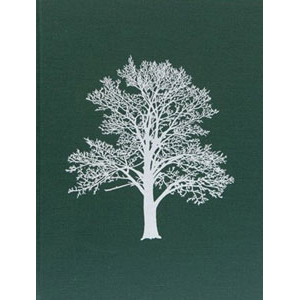
With the Grain - A Craftsman's Guide to Understanding Wood, by Christian Becksvoort - Book Review
by J. Norman Reid
Delaplane, VA
This slim volume by a master woodworker of long experience offers a broad, if brief,
overview of wood and woodworking from the growing tree to the finished product. The first
of its five chapters treats trees and the structure of wood. Here Becksvoort reviews the
classification of trees as hardwoods and softwoods, the scientific terminology for wood
structure, wood's properties—including color, density, grain and figure—and the wide range
of defects and abnormalities that affect its working qualities. Beginning woodworkers will
find this a valuable orientation, experienced woodworkers a useful review and
reference.
Chapter 2—which makes up nearly half of the book—covers the identification and
characteristics of common domestic tree species. Each is given a two-page spread, with a
silhouette of the mature tree, drawings of its leaf, twig and fruit to aid in
identification, as well as photos of the bark, end grain and face grain. This is
supplemented with a short text describing the characteristics, uses and name origin of
each species.
Chapter 3 is an interesting overview of woodlot management and lumber harvesting. Here
Becksvoort reviews conducting an inventory and developing a management plan, the
objectives of a thinning program, tools needed, diseases and pest control, getting
professional help, harvesting and finding sources of wood outside the woodlot. This
chapter will obviously be of greatest interest to those who own or have access to even a
small woodlot; for the rest of us, it's interesting information and a good read.
Chapter 4, on sawing and aging wood, is relevant to anyone with access to raw timber,
whether or not you own a woodlot. It begins with a brief review of sawing methods—plain
sawing, boxing the heart and quartersawing—and grading standards. Becksvoort briefly
discusses finding owner-operated sawmills to process small quantities of lumber. Greater
attention is given to methods for drying the wood, including the physics of moisture loss
in the lumber during the drying process and air and kiln drying. Emphasis is placed on
methods you can use for yourself.
Chapter 5 gets down to the business of using the resulting lumber in furniture
projects. Becksvoort's treatment—a comprehensive though brief review of issues and topics—
emphasizes issues of wood movement and how to manage it effectively. In addition, he
considers glue and gluing, grain direction and matching, the working qualities of wood,
dealing with imperfections, bending wood with heat and steam, working with green wood and
using wood in outdoor projects. Along the way he offers helpful advice on case
construction, web frames, case backs, moulding, cleats and other stabilizers, drawers,
doors and tables. This chapter, like some of the earlier ones, is comprehensive and basic;
it will be a good orientation for newer woodworkers, a helpful review and good read for
those with more experience.
The book is entirely focused on wood that might be found in a typical domestic woodlot,
especially an eastern one, and that might find its way into woodworking projects. For
imported species you will need to look elsewhere. Many of the species described are
generally unavailable from hardwood suppliers and for these species – lacking access to
standing or downed timber and a way to process it – the information may be more interesting
than useful. But since even suburban neighborhoods hold a variety of specimens with
potential woodworking value, this can include many of us.
Becksvoort presents many useful tables of wood characteristics that will be valuable
for project design and lumber management. Of particular interest is the table with
dimensional change coefficients for various species and the accompanying discussion on pages
107-108 of how to apply the information.
As we've come to expect from Lost Art Press, the publishers of this fine book, With the
Grain is well bound and printed on heavy, quality paper stock. The book is
well-illustrated throughout with black and white photos and line drawings. Its many data
tables add greatly to its value by bringing a lot of critical information into a single
place.
Who can expect to benefit from this book? Beginners will find a great introduction to
the full range of issues involved with wood and its use. Intermediate and advanced readers
will find that deeper consideration of some individual topics can be found elsewhere but
that no single source brings it all together in one place as Becksvoort does. The numerous
tables make this a useful reference work. Chapter 5 is a particularly good tool to consult
when designing a new project. Woodlot owners and those willing to scour their
neighborhoods for downed trees or those being removed should find the chapters on these
topics to be helpful introductions and a good source of ideas.
I'm glad I bought this book and made it a permanent fixture in my woodworking library.
I give it a strong recommendation.
Purchase your own copy of
With the Grain
today!
The author is a woodworker, writer and photographer living in Delaplane, Virginia, in the
foothills of the Blue Ridge Mountains with his wife, four cats and a woodshop full of
power and hand tools.
He can be reached by email at
nreid@fcc.net
.
Return to
Wood News
front page


